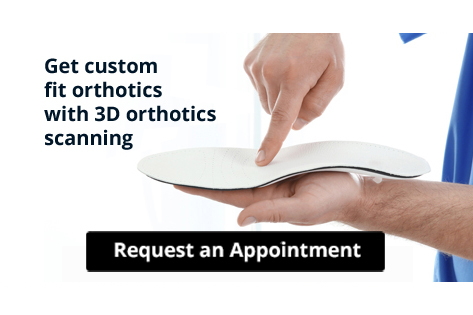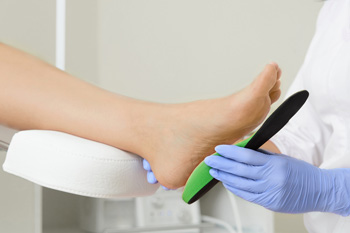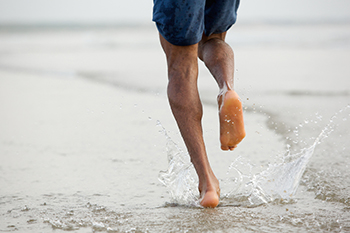 The feet are a complex part of the body that contains 25% of our bones. Because the average 50-year-old has walked 75,000 miles, it is important to keep the feet strong and healthy to prevent pain and diseases from impacting them. Common skin-related issues on the feet include fungal nail infections, corns, calluses, warts, ingrown toenails and athlete’s foot. Common muscle, tendon and joint problems include hammertoe, heel spurs, plantar fasciitis, bunions and arthritis. In order to prevent these issues, proper foot care is important. Regularly washing the feet, wearing clean socks, and making sure your feet are dry are key steps to helping prevent skin-related issues. Wearing comfortable shoes that fit correctly, stretching and massaging the feet, and moving around after sitting for long periods of time are also important in reducing the risk of foot problems. The biggest key to foot health, however, is knowing when to see a podiatrist. If your foot pain is inhibiting your ability to walk and function, or you are diabetic and notice new issues with your feet, it is important to seek the care of a podiatrist.
The feet are a complex part of the body that contains 25% of our bones. Because the average 50-year-old has walked 75,000 miles, it is important to keep the feet strong and healthy to prevent pain and diseases from impacting them. Common skin-related issues on the feet include fungal nail infections, corns, calluses, warts, ingrown toenails and athlete’s foot. Common muscle, tendon and joint problems include hammertoe, heel spurs, plantar fasciitis, bunions and arthritis. In order to prevent these issues, proper foot care is important. Regularly washing the feet, wearing clean socks, and making sure your feet are dry are key steps to helping prevent skin-related issues. Wearing comfortable shoes that fit correctly, stretching and massaging the feet, and moving around after sitting for long periods of time are also important in reducing the risk of foot problems. The biggest key to foot health, however, is knowing when to see a podiatrist. If your foot pain is inhibiting your ability to walk and function, or you are diabetic and notice new issues with your feet, it is important to seek the care of a podiatrist.
Everyday foot care is very important to prevent infection and other foot ailments. If you need your feet checked, contact one of our podiatrists from Foot Health Center of Merrimack Valley. Our doctors can provide the care you need to keep you pain-free and on your feet.
Everyday Foot Care
Often, people take care of their bodies, face and hair more so than they do for their feet. But the feet are a very important aspect of our bodies, and one that we should pay more attention to. Without our feet, we would not be able to perform most daily tasks.
It is best to check your feet regularly to make sure there are no new bruises or cuts that you may not have noticed before. For dry feet, moisturizer can easily be a remedy and can be applied as often as necessary to the affected areas. Wearing shoes that fit well can also help you maintain good foot health, as well as making it easier to walk and do daily activities without the stress or pain of ill-fitting shoes, high heels, or even flip flops. Wearing clean socks with closed shoes is important to ensure that sweat and bacteria do not accumulate within the shoe. Clean socks help to prevent Athlete’s foot, fungi problems, bad odors, and can absorb sweat.
If you have any questions please feel free to contact one of our offices located in North Andover, and Tewksbury, MA . We offer the newest diagnostic and treatment technologies for all your foot and ankle needs.




 Cuboid syndrome
Cuboid syndrome




